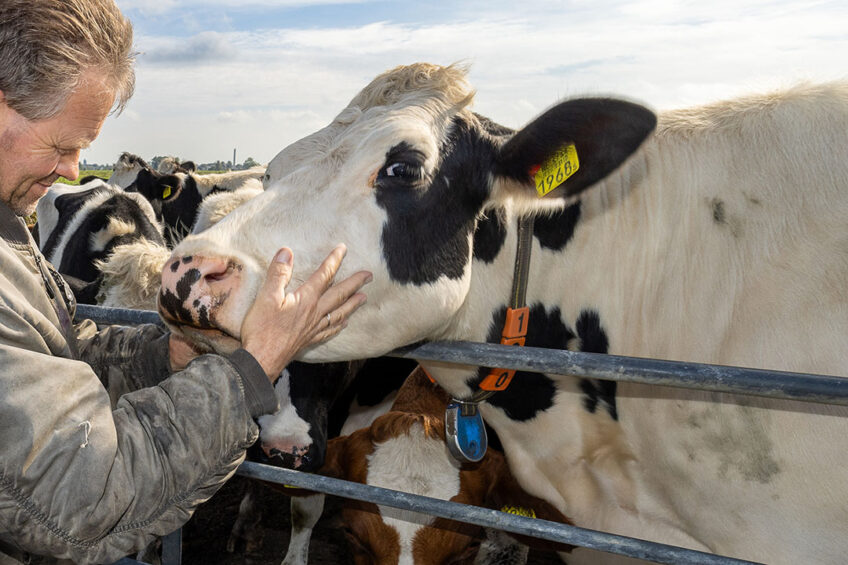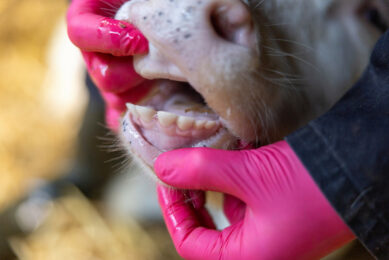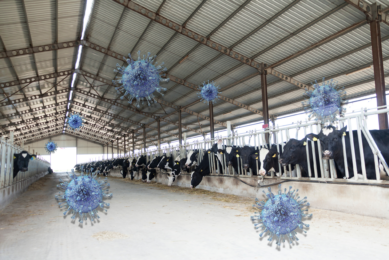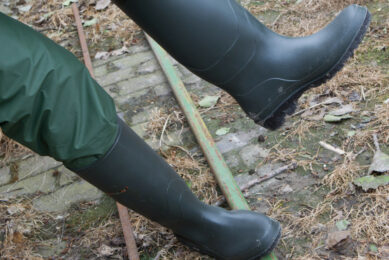Understanding overwintering and risk prediction of Bluetongue virus

Reports show Bluetongue virus transmission is interrupted during winter; however, outbreaks often reappear in the following season (overwintering). Understanding the overwintering mechanisms for Bluetongue virus is the beginning of an effective control strategy. In the current report, the probability of Bluetongue virus overwintering is assessed through different lenses. Also infused here is the role of climate change on transmission, and machine learning models for risk prediction.
Insect vectors play a major role in Bluetongue virus circulation among ruminants. Bluetongue virus transmission is mainly carried out by Culicoides biting midges that acquire the virus through ingestion of blood from viraemic vertebrate hosts. After infecting susceptible Culicoides females, the virus replicates in midgut cells, reaches the salivary glands, and is consequently transmitted through further biting activities on animal hosts. On the other end, several studies highlight the mechanisms behind Bluetongue virus overwintering.
Horizontal transmission in the insect vectors
While Culicoides imicola represents the main Bluetongue virus vector, studies show that other Culicoides biting midges are involved in virus transmission. Understanding their distribution, seasonal abundance, and infection rates is necessary to predict disease incidence and define their role in virus overwintering.
In a study conducted by researchers from the University of Sassari in Italy, researchers determined the abundance of biting midges by light traps on selected farms representing diverse climatic conditions. They found that on the Italian island of Sardinia, Bluetongue virus is transmitted by multiple Culicoides vectors, including Culicoides imicola and Newsteadi complex species. The Newsteadi complex species were found to be directly involved in virus overwintering.
In this study, published in the Parasites & Vectors journal, higher infection rates were associated with Culicoides scoticus, and Culicoides newsteadi species A and species B, compared to Culicoides imicola. The virus was detected in Culicoides newsteadi species A and Culicoides obsoletus in winter and spring, whereas in C. imicola it was mainly found in summer and autumn.
Overwintering in the insect vector
Although adult Culicoides are far less tolerant to sub-zero temperatures and are normally thought to survive no longer than 10-20 days, laboratory studies suggest that this lifespan may be extended by mild winter conditions, with individuals surviving for up to 3 months at 10°C. Reports also show that in mild winters, the infected adult Culicoides population might survive long enough to bridge the gap between transmission seasons. Adult Culicoides may also be sheltered from the worst conditions of winter by their choice of resting place; studies show these vectors may move indoors when outdoor temperatures drop.
Overwintering in the ruminant population
BTV is reported to persist in the ruminant population during the winter, by chronic or latent infection of some individuals, transmission across the placenta from mother to foetus, or transmission during sexual intercourse. On the other hand, Bluetongue virus and most other arboviruses are normally detected by testing blood samples, meaning viruses infecting only certain organs of the body but absent from the bloodstream may escape detection. Some reports show that although most Bluetongue virus infections in cattle endure for less than 60 days, a fraction may last for much longer; such infections could permit the virus to persist for 3-4 months without infecting new hosts, and thereby survive short periods of vector absence.
In transplacental infections, a virus infecting the mother crosses the chorion and invades the foetus. Since the gestation period of cattle is 9 months (against 5 for sheep), the potential for the virus to bridge the seasonally vector-free period via this mechanism is possible. Infected bulls and rams may also occasionally shed the virus in semen, possibly because of contaminating blood cells, and venereal transmission may thereby occur. However, current trade regulations require that breeding bulls and rams are tested for Bluetongue virus, among other possible infections, before semen can be exported.
Mechanical transmission
Mechanical transmission is the physical transportation of an infectious virus from one host to another, without extrinsic replication. Mechanical transmission of Bluetongue virus has been shown in Melophagus ovinus, a wingless ectoparasitic fly that lives in the fleece of sheep. Ticks may also occasionally act as biological vectors of Bluetongue virus and can live for several years. Bluetongue virus may also be spread mechanically between animals by humans, for example through contamination of vaccines, but this is unexpected if high production and hygiene standards are maintained.
Climate change on the transmission of Bluetongue virus
There is also concern that climate change will lead to the expansion of vector-borne diseases as they are the most sensitive to climate drivers. In a recent study, researchers derived future Bluetongue virus risk trends for northern Europe using a detailed spatial transmission model to simulate outbreaks in England and Wales under future warmer climatic conditions. Their results indicated that by the year 2100, Bluetongue risk will extend further north, the transmission season lengthens by up to 3 months and outbreaks are larger on average. They concluded: “Our results suggest that efficient detection and control measures to limit the spread of vector-borne diseases will be increasingly vital in future, warmer climates.”
In a similar study published in Nature Reviews Microbiology journal, researchers suggested changes in the European climate has allowed increased Bluetongue virus persistence during winter. They highlighted the continuing entry of new Bluetongue virus strains into Europe is likely to be exacerbated in future by further climatically induced increases in vector competence and extensions in vector distribution and seasonal activity. “New strains of Bluetongue virus might also arise through re-assortment (exchange of genome segments) of an increasing number of wild-type strains,” they said.
Machine learning models for Bluetongue risk prediction
It is important to accurately predict the risk of disease before it occurs. In a recent research published in the BMC Veterinary Research journal, researchers enhanced the accuracy of Bluetongue risk prediction using machine learning approaches: the seroprevalence data of 233 apparently healthy ruminant animals was used to analyze and compare the performance of the algorithms in predicting Bluetongue risk. The researchers used logistic regression (LR), decision tree (DT), random forest (RF), and a feedforward artificial neural network (ANN) to develop predictive Bluetongue risk models and compared their performance to the base model (logistic regression).
Overall, random forest (RF) performed best, with the highest accuracy measurements, followed by the artificial neural network (ANN). Logistic regression (LR) was the least accurate and precise of all the machine learning techniques used. All the models demonstrated that the most prominent risk predictors are age and season (summer, and autumn). They concluded machine learning techniques demonstrate a promising impact in implementing prediction and classification using small datasets.
Epidemiologists have work to do
As Bluetongue virus overwintering can be found ranging from as little as 3 months to 8 or 9, the principal difficulty faced by the epidemiologist is narrowing down the list of suspects and demonstrate that the re-emergence of bluetongue in a region is due to overwintering rather than reintroduction.
As long as our understanding of overwintering in the field remains poor, the reappearance of the Bluetongue virus, following an outbreak, seems inevitable; this could be exacerbated by the absence of effective vaccines or targeted vector control programmes.
References available on request.
Join 13,000+ subscribers
Subscribe to our newsletter to stay updated about all the need-to-know content in the dairy sector, two times a week.










